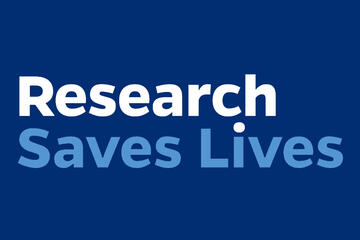Timothy Weihs is charged with thinking about the unthinkable: the cataclysmic destructive force of a nuclear detonation and the lethality of chemical and biological weapons. Dark topics, indeed, but the professor in Johns Hopkins University's Department of Materials Science and Engineering seeks to understand these weapons of mass destruction so he can neutralize their threat—and, ultimately, reduce harm.
"We're trying to prevent bad things from happening," Weihs says.
Weihs directs the Materials Science in Extreme Environments University Research Alliance, a collaboration of 17 universities, labs, and research centers in a dozen states across the country. Led by Johns Hopkins in collaboration with the federal Defense Threat Reduction Agency (part of the U.S. Department of Defense), the alliance launched in 2020 with $30 million in federal funding. It focuses on "understanding, predicting, and controlling the behavior of materials in extreme conditions caused by weapons of mass destruction," according to its website—though threats to federal research funding, as well as the recent government shutdown, could mean the work will be interrupted and delayed.
Video credit: Aubrey Morse and Will Kirk / Johns Hopkins University
One scenario the alliance works to address: how to safely destroy chemical agents held in enemy hands. It could be mustard gas (used in WWI), a bioagent such as anthrax, or even the synthetic opioid fentanyl, which has the potential to be weaponized, Weihs says. Most often, the alliance works with sarin, a clear, colorless, and tasteless nerve agent considered to be more than 80 times as toxic as the deadly chemical cyanide. To do so safely, researchers employ a sarin surrogate in the lab, a chemical that shares many properties with the nerve agent—minus the high toxicity.
"Let's say the military receives some intel about the location of a stockpile of chemical weapons," Weihs says. "What is the ability for us to neutralize the stockpile facility, which may be underground and in a city? How can we promptly defeat the agents before they're used without harming the surrounding civilian population?"

It's a multifaceted problem that calls for a multi-step solution, starting with a projectile that can penetrate what could be a fortified storage bunker, Weihs says. Then, once inside, the team would need to deliver a payload that creates a fireball with sufficient heat to destroy the gas. But herein lies a hitch: They can't simply use high explosives because their detonation could end up dispersing the chemical weapons before the heat exposure can neutralize them. If that happened during a real threat, the team would die.
In his lab, Weihs and other scientists examine how to use metal powders to create a high-heat fireball. "Aluminum and boron are two examples that produce the most heat per mass and per weight," he says. "But they don't burn really well, so we look at how to alloy them, mix them with other elements to get them to burn better." Videos of lab tests show various metal powders ignited in test chambers. As the powders burn, X-ray images are taken to help researchers determine a particular powder's combustion efficiency.
Another major component of the alliance's work is studying the impact of nuclear blasts, including the massive shock wave that can shatter windows, crush objects, and injure and kill people—and the electromagnetic radiation pulse that can wipe out communications systems and destroy computers and other electronic devices. The group wants to understand how various substances respond to these extreme forces, both on Earth and in space, where military and civilian satellites could be vulnerable to such disturbances. Given that the days of testing actual nuclear weapons are long over, researchers use high-powered lasers focused on the substances under study to simulate shock waves.

Image credit: Will Kirk / Johns Hopkins University
For the scientists and engineers who make up the alliance, the work involved in understanding and neutralizing weapons of mass destruction is a complex team effort, with experts across the country collaborating on the initiative.
"As the lead institution in the alliance, Hopkins [manages] the flow of money and subcontracts to other institutions that have the people, strengths, and lab facilities needed to do the work," Weihs says. In addition to JHU, three other institutions are permanent alliance members: the University of California's San Diego and Riverside campuses and the University of Illinois Urbana-Champaign. Georgia Tech, Morgan State University, the South Dakota School of Mines & Technology (a public university in Rapid City), and other colleges and universities also take part.
"I enjoy being part of this large consortium, which is not something that a lot of smaller universities like ours would normally be a part of," says Lori Groven, associate professor of chemical and biological engineering at the South Dakota school. "It has given my graduate students opportunities they wouldn't ordinarily have and a chance to work for the government on an important problem."
Her team is investigating chemical methods of neutralizing sarin and other such weapons, including how "nano metal oxides" might act as a beneficial catalyst to neutralization.
This work holds tremendous value in part "because we're training the next generation of scientists and engineers that are going to continue to safeguard us," Groven says. "Without research like this and the dollars to train students, we wouldn't be doing everything we could to defend our nation."
Posted in Science+Technology
Tagged materials science









